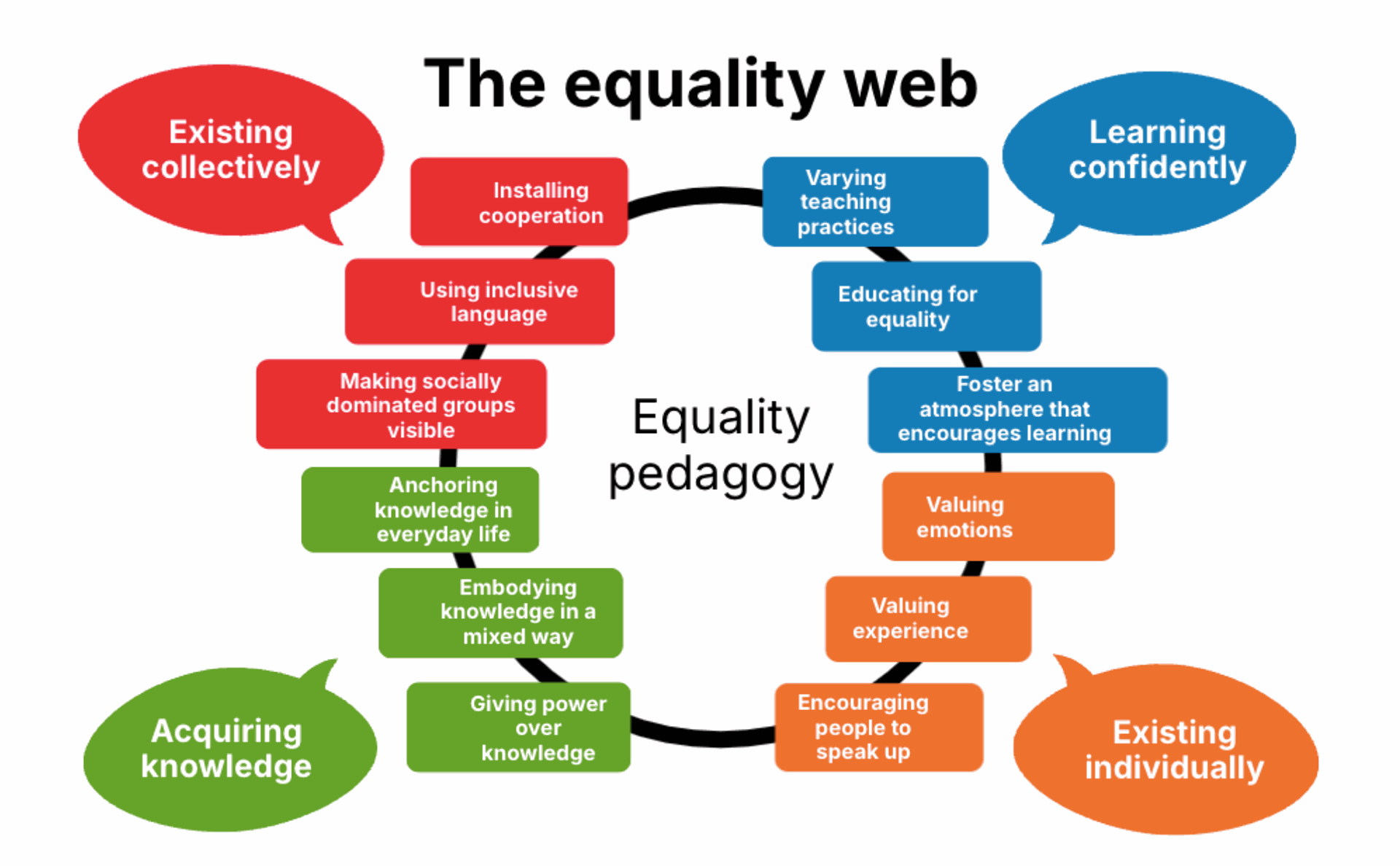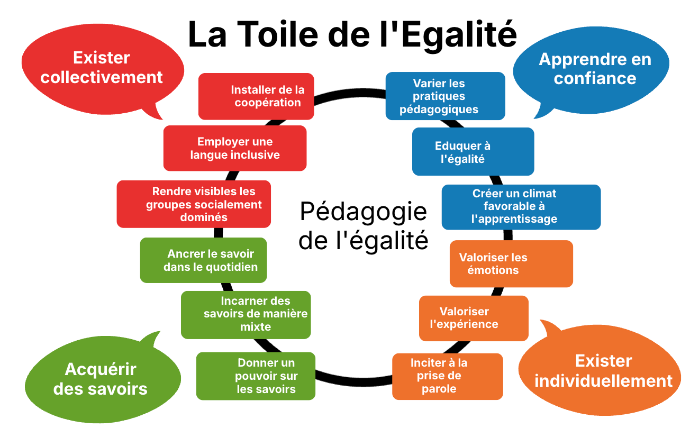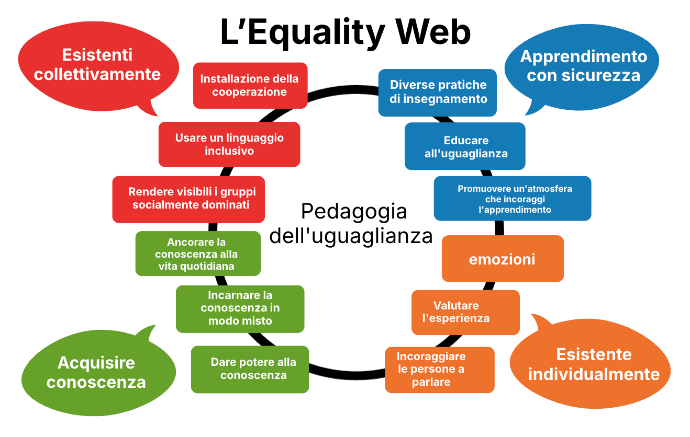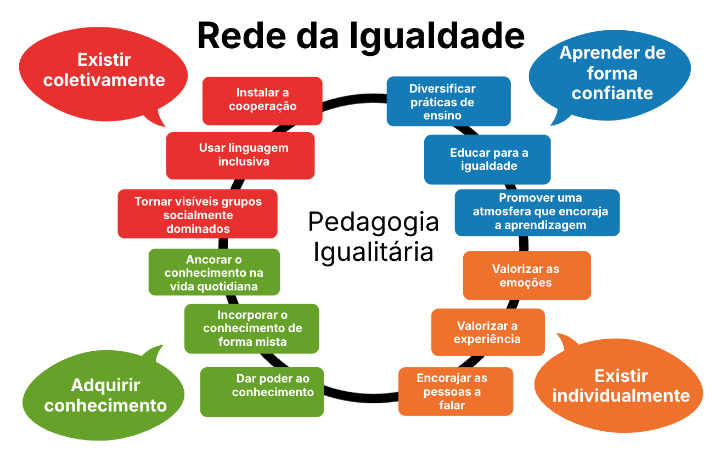The equality web
The equality web
The construction of an inclusive learning environment can be facilitated by using the equality web tool developed by Isabelle Collet (https://interstices.info/appliquer-une-pedagogie-de-legalite-dans-les-enseignements-dinformatique/). The equality web is an assessment tool that invites you to think critically about the root causes of inequalities, particularly those linked to gender, and to imagine actions to overcome them.
The equality web comprises four areas that structure the model (acquiring knowledge, existing collectively, learning confidently and existing individually). These areas target the students, while the different statements in the rectangles on the circle are the skills that teachers need to apply to achieve these principles. The statements are placed on a circle to indicate the links between them (Collet et al., 2024).





The equality web is used to help to recognize unequal teaching situation and to identify what can be done to implement an equality pedagogy.
By using the equality web, the goal is not to respond to unequal social interactions after they occur but to prevent them from being triggered in the first place.
The first use of the web involves an "inverted" observation grid: teachers are asked to cross out areas or statements that, upon analyzing a lesson or classroom situation, cannot be activated. In this way, teachers can identify areas for improvement to make the learning environment more inclusive. For instance, if children's books exclusively portray white, heterosexual, middle-class families, what effect might this have on students whose daily lives differ from this depiction? Will it empower them in their learning? Will it allow them to feel represented?
Once these observations are made, the equality web serves as a guide for developing lesson plans. The crossed-out elements are revisited, and a lesson, resource, or series of activities is created to address and balance these gaps.
There are no comments for now.
